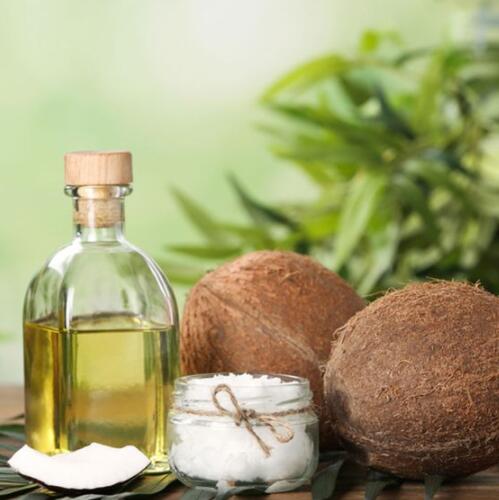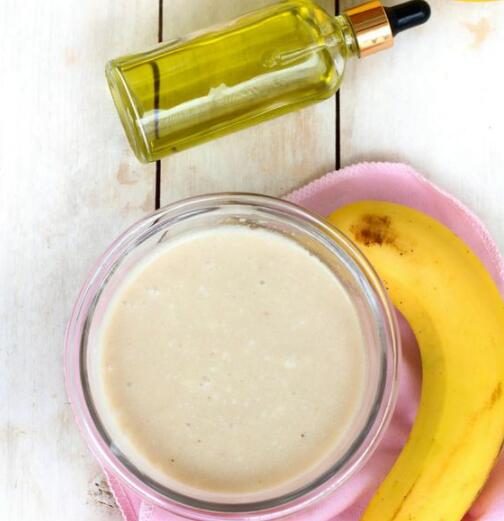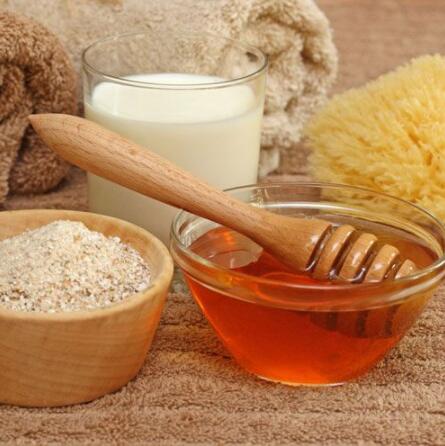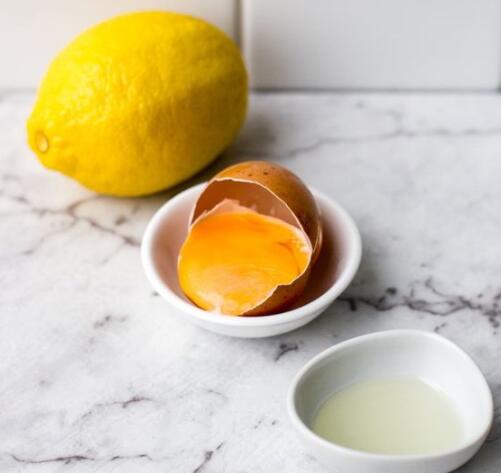If you want some simple ways to care for your hair at home instead of going to the barbershop or hair salon, then you can make your own hair mask at home, DIY hair mask with simple hair care ingredients can also nourish your hair. Here are some easy hair mask recipes and basic ingredients to make without going to the store to buy expensive professional products. Read on to learn how to DIY hair masks at home!
Ingredients and methods of DIY hair mask
Coconut products
Coconut milk and oil are traditional ingredients in moisturizing hair masks and split-end treatments. Their secret lies in high levels of antioxidants and fatty acids. Easily absorbed by the hair thanks to its fatty acids, it contains Vitamin E for hair growth and UV filters to protect against sun damage, its moisturizing properties lock in moisture, prevent dryness and retain protein. Therefore, treating damaged, frizzy, or dry hair is easier with a preheated coconut oil hair mask.

There are several ways to use coconut oil, depending on your hair needs. First, if you're using shampoo to strengthen your hair, try using it for 10 minutes before shampooing. Or, for a deep treatment, use in place of conditioner and apply from mid-shaft to ends to moisturize and defrizz. Finally, when rubbed directly on the scalp, coconut oil is antibacterial, helping to fight dandruff, unclog pores, and promote hair growth. Apply evenly through the scalp and hair with a wide-toothed comb. Coconut oil is heavy, so use an appropriate amount according to your hair type. Use a teaspoon for fine hair and a tablespoon for thick hair.
Olive oil
It's the panacea for DIY hair masks for dry hair because it holds in moisture and smoothes the cuticle. Olive oil is rich in healthy fats and vitamin E, which can make hair look shinier and smoother. It also moisturizes the hair and heals damage that can lead to breakage and split ends. It has a dense, sticky texture, so it's not suitable for overly greasy hair. But for those with dry, thick, processed, or even oily scalps and dry ends, pure olive oil is the way to go.
Banana
Banana moisturizes dull, damaged, dry hair as it is rich in vitamins and minerals such as potassium which provides vitamins and minerals to hair strands, increases hair moisture and elasticity, and balances the pH of the scalp. Bananas also stimulate the production of collagen, resulting in stronger, thicker hair.

Make a hair mask with banana and olive oil. Use one ripe banana and one tablespoon of olive oil. Blend or mash the bananas until a lump-free puree form. Add olive oil and continue to stir. The result should be a creamy, foamy hair mask. In the shower, use your fingers to work the mask into hair and scalp. Leave on for 10 to 15 minutes, then rinse.
Milk and honey
If you have fine hair and are looking for a DIY hair mask to treat damage, you'll find this milk and honey blend. Honey contains keratin, which helps strengthen hair and prevents it from becoming brittle. It also promotes cell regeneration for a healthier scalp and has anti-inflammatory properties that calm irritation.' When combined with milk rich in protein, amino acids, vitamin B12, iron, and zinc, these two substances can help soften hair and supports its structure.

Since milk has a thin liquid consistency, it is recommended to put a glass of milk and a tablespoon of honey in a spray bottle and spray it on the hair. Leave on for 10 to 20 minutes after shampooing (instead of conditioner). Rinse with warm water for a shiny, smooth finish.
Egg yolk
Egg yolks are rich in vitamins that make hair more resistant to damage. Vitamins A and E, biotin, and folic acid are some of the nutrients associated with hair growth and healthy hair - applying egg yolk to the scalp infuses the roots with these vitamins.

To make this mask, start with clean, dry hair. Whisk the egg yolk, then use your fingers to spread the mask, making sure to cover the top of the scalp and ends of the hair. Let it sit for an hour, then rinse with cold water, hot water may cause the eggs to curdle.
Apple cider vinegar
Apple cider vinegar is good for many hair types. It detangles fine and long hair well. It can help close the cuticle of color-treated hair, thereby reducing color fading. It can also help control frizz, making it a popular treatment among those with naturally curly hair. It can even remove debris from hair follicles, helping to reduce hair loss. Be careful if you have dry hair as using too much can remove too much oil and cause further dryness.

Mix one cup of apple cider vinegar with one tablespoon of honey (the honey acts as a binding agent to prevent moisture loss from the hair and scalp). Put the mixture in a spray bottle and spray it on your hair. Leave on for 10 minutes, then rinse with warm water.
Oatmeal
The cheapest strong DIY hair growth masks are oatmeal-based blends. Retinol and Thiamine activate hair follicles; Ascorbic Acid helps control sebaceous gland function and treat an oily scalp, while B vitamins penetrate hair's deepest layers. If you want to get 200% of your nutrition from oatmeal, use it as a face mask ingredient and for breakfast.
For hair growth and thickness, whip 1/2 cup of oats, 2 tablespoons of almond oil, and 1/2 cup of milk to boost hair growth. For the mask to work best, apply it to wet hair.
At-Home Hair Mask Tips:
Regular hair mask
Incorporate a hair mask into your weekly routine. Use an oil-based moisturizing hair mask once a week for normal hair or every two weeks for oily or combination hair. The Fruit and Vegetable Oil-Free Mask is suitable for all hair types and can be used twice a week.
Don't go too far
Most hair masks should be left on for 15-30 minutes (except overnight hair masks). However, many of us tend to turn this into a two-hour marathon, hoping that the longer application will yield faster, more impressive results. But this approach doesn't work.
Keep warm
Many ingredients in hair growth masks work better when heated, so wrap your head in a towel or plastic cap to maintain temperature and enhance action. Heat it up, but don't let it get too hot -- high heat can cause hair damage and skin burns.
Choose a hair mask based on your hair type
No one knows your hair better than you. Therefore, it is not necessary to directly use the mask recipes that appear on the Internet. Use your intuition and knowledge to try out different combinations to find the perfect DIY hair mask for you.








